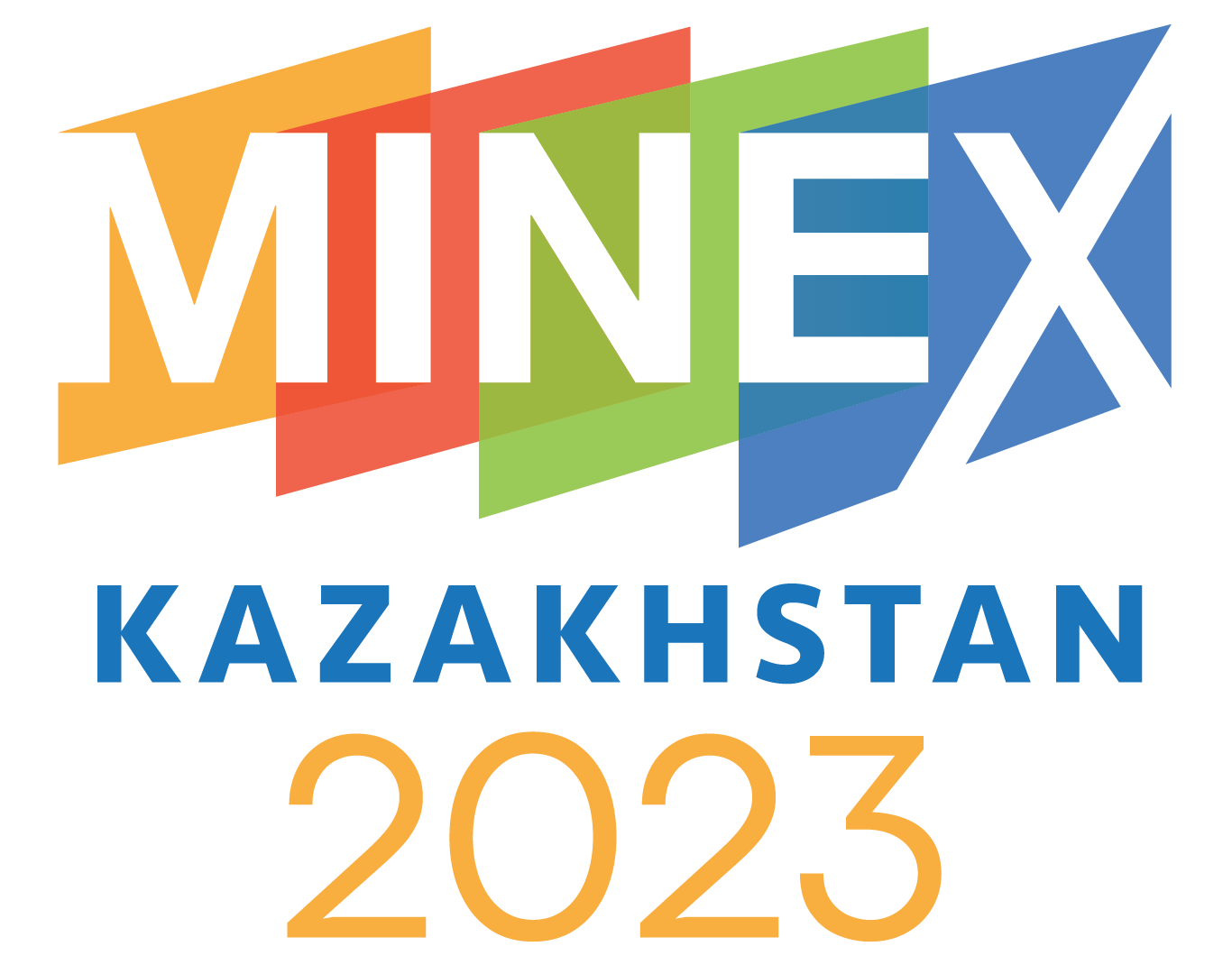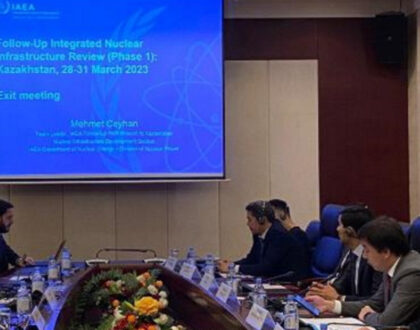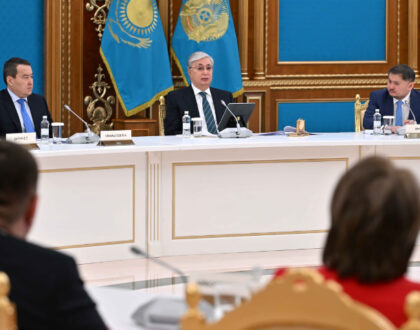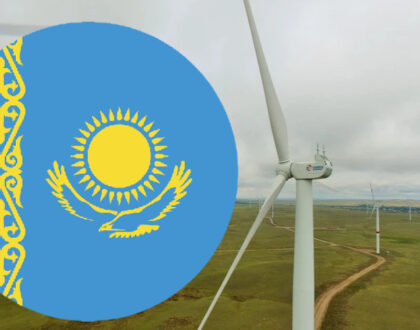Development of natural resources is a driver of economic growth and welfare of the people of Kazakhstan

In January, a meeting of the Council of Domestic Entrepreneurs (COP) dedicated to the development of the mining and metallurgical complex (MMC) was held under the chairmanship of Prime Minister Alikhan Smailov. Raimbek Batalov, Chairman of the Presidium of the Atameken National Chamber of Entrepreneurs, discussed with inbusiness.kz the current situation and issues in the Mining and Metals industry.
– Raimbek Anvarovich, tell us why such attention is paid to the issues of the mining and metallurgical complex in Atameken.
– Special attention is paid to solving the issues of the mining and metallurgical complex at the government level. After all, this industry, along with the oil and gas industry, is the main flagship and donor of the Kazakhstani economy, accounting for more than 10% of the country’s economy in terms of such indicators as its share in GDP, export earnings, and tax revenues.
In value terms, the industry produces more than the food industry, light industry, chemical industry, pharmaceutical industry, the production of coal and oil products, plastic, rubber, wood, paper and building products, mechanical engineering, as well as energy, heat and water supply combined. About 30% of the employees of the industrial sector of the Republic of Kazakhstan work at the enterprises of the MMC – and this is about 200 thousand direct jobs. And if we count together with segments of related industries and members of the families of workers, in total, about a million Kazakhstanis are connected with the mining and metallurgical complex industry – almost every twentieth inhabitant of our country.
Today, in the minds of Kazakhstanis, there is an opinion about some kind of “resource curse” of countries with large mineral resources. But natural resources have become the key to the intensive development of our country over the years of independence. We should not be afraid of the raw material component of the structure of the Kazakh economy. This is our advantage, like access to the sea or the size of the domestic consumption market for other countries, which you just need to skillfully use.
Kazakhstan is in constant geopolitical and economic competition with other countries. We are forced to compete for sales and capital markets, for attracting investment and innovation, we must constantly analyze the situation and take appropriate steps in order to maintain our place in global economic markets. And in these conditions, it is important for us to effectively use our natural advantages, which were given to us from the very beginning, in order to start real diversification of the economy on this basis.
There are excellent examples of countries that have managed to use their resources effectively. 30 years ago, Australia and Canada were approximately on the same level as Kazakhstan in terms of the possession of mineral resources and the degree of their development.
The governments of these countries, first of all, created the institutional and technical conditions for attracting and successfully operating both local and foreign investors. The “boom” in the mining sector of these two countries, despite various geopolitical challenges, is not only not subsiding, but, on the contrary, is increasing. Every year, new medium and small companies enter the Australian and Canadian markets; former “juniors” continue their growth, gradually becoming major players who are already mastering the markets of other countries. And already on the basis of what has been achieved, these two states began to consistently deal with issues of diversification, the development of a new service and a “green” economy, and as a result, they are among the advanced countries of the world – according to the World Bank, in terms of GDP, Canada in 2020 ranked 9th in the world. world, Australia – 13th.
Following a similar path, after Australia and Canada, the countries of the “second” tier moved: Chile, Argentina, Peru, Mongolia and others, and, I must say, they also successfully and far advanced along this path, ahead of Kazakhstan in many respects, which, I repeat, 30 years ago was on the same starting position with the current leaders – Australia and Canada.
In recent years, many African and even Arab countries rich in oil and gas, such as Saudi Arabia, have also embarked on the path of priority development of the mining of solid minerals and metal ores, adopted relevant state sectoral strategic programs and began to actively implement them.
– Is Kazakhstan ready to follow in order to keep up with its closest competitors? What is being done today and what does Atameken offer?
– The mining sector of these countries has received large investments and investors who have received various types of assistance and support. Unfortunately, the situation in our country has recently been the opposite in many respects.
For example, starting from January 1, 2023, the mineral extraction tax (MET) was increased in the amount of up to 30%, and for certain items – up to 50%. This very significant increase affects the interests of all industry players, including large domestic and foreign subsoil users. In particular, the leading Western mining company Rio Tinto immediately issued a special statement – of regret to the government.
But small and medium-sized businesses – “junior” companies – will suffer even more from the growth of the tax burden. According to tentative estimates, such an increase in the severance tax will put on the brink of survival from 50% to 70% of subsoil users – SMEs. At the same time, such an important amendment to the Tax Code was not widely discussed by the government of the country; just the most vulnerable business entities – “junior” companies – were practically not involved in the discussion.
In addition, this issue is closely related to the transition to international standards for reporting on reserves of solid minerals.
In 2018, the Tax Code was enacted, which provides for the full transition of the mining industry to international reporting standards for reserves based on CRIRSCO from January 1, 2024. In Kazakhstan, on the basis of CRIRSCO, the KAZRC reporting standard was adopted. The GKZ reserve calculation system, which now operates in parallel with KAZRC, should have become a thing of the past. This step was aimed at attracting investment to the industry and its further integration into the global economy.
The CRIRSCO and GKZ standards have conceptual differences in the classification of reserves and resources. CRIRSCO reserves and resources are not constant and may be recalculated based on market conditions. Whereas the GKZ is based on the methodology for estimating reserves, which was laid down in the Soviet planned economy, where market factors were not key. The transition to the CRIRSCO standard from the beginning of next year will inevitably require reforming the current system of severance tax collection, which is based on the withdrawal of natural rent, based on the volume of extinguished reserves calculated according to the GKZ. It is necessary to reconsider the principles of levying the severance tax from the “bucket” to levying a tax on the actually sold commodity product, which is practised in most countries of the world.
Despite the fact that the transition to international standards was announced back in 2018, all these years there has been practically no systematic preparatory work in this direction on the part of the tax authorities and the Ministry of the National Economy of the country. The Chamber considers that this work should be started immediately. There is time until the end of this year.
In the example of the latest amendments to the Tax Code, according to which the MET rates for some types of mineral raw materials were increased by 50%, for others – by 30%, and for some types of raw materials remained practically unchanged, we see that the state bodies responsible for the formation and the implementation of tax policy, sometimes there are no clear, transparent, reasonable and clear principles for the formation of this policy. It is necessary to provide that the process of forming specific (and not only) tax rates for businesses, such as the MET (in the future, royalties), has an understandable, transparent and economically justified approach, based on the balance of interests of the industry and the state, and is not focused on the interests of individual business entities.
For example, in Australia, royalty rates are based on certain targets and are currently aimed at taking about 10% of subsoil users’ income. In general, MET rates should provide a reasonable and economically justified balance between the interests of the business and the state. High MET rates in the context of the transition to CRIRSCO discourage the development of complex polymetallic deposits, poor deposits with a low content of metals, and others.
In this regard, the representatives of “junior” companies applied to NCE “Atameken” with a proposal to provide a reduction factor of 0.5 to the corresponding rates of mineral extraction tax for small and medium-sized companies. A similar practice of applying reduction factors exists in the current section of the MET for solid minerals. At the same time, the introduction of the proposed tax relief, and in fact a return to the previous rates for “junior” companies, is in line with the spirit of the nationwide policy of supporting SMEs, which should remain relevant even in the event of a transition from MET to royalties.
In addition, until 2009, the turnover on the implementation of geological exploration and geological prospecting in Kazakhstan was exempt from value-added tax. Given the factor of depletion of mineral reserves and the need to intensify exploration in the country, it is necessary to stimulate companies that carry out work and provide services in this area. We proposed to reduce the VAT rate to 0-2% for exploration companies that carry out and provide relevant works and services as part of the development of a new Tax Code for the Republic of Kazakhstan.
These measures, which were proposed to the government, will contribute to greater stimulation of exploration and production activity in the country’s subsoil use.
– The problems of reasonable and efficient taxation are always important, significant and urgent for the activities of business entities not only in the mining and metallurgical complex but also in other sectors of our economy. Could you elaborate on other specific
Problems in the mining industry, for example, related to environmental protection?
– Issues of ecology and respect for natural resources are a priority for entrepreneurs in the MMC sector, and this primarily concerns large companies in the industry. They are already actively working on the introduction of resource- and energy-saving technologies, on reducing emissions of solid substances into the atmosphere and bringing them up to the level of world standards.
Currently, in accordance with the requirements of the updated Environmental Code, automated monitoring systems (AMS) for emissions of solid and gaseous substances are being installed everywhere at Mining and Metals enterprises, although there are also problems associated with delays in the production and supply of imported equipment due to the current geopolitical situation.
Large companies have begun greening activities, fulfilling the instruction of the head of state to plant 2 billion trees in Kazakhstan in the next five years.
The solution to environmental protection issues includes both the modernization of existing industries and the creation of new, more environmentally friendly ones. For example, modern technologies make it possible to build coal plants with a minimum amount of harmful emissions into the atmosphere. And there are companies in the mining and metallurgical complex of Kazakhstan that are ready to build coal plants according to the latest world environmental standards. At the same time, it is very important to maintain a balance between environmental requirements and the interests and opportunities of domestic business.
Since 2021, the Environmental Code of the Republic of Kazakhstan has laid down a new comprehensive environmental impact assessment (EIA) scheme, which is initiated by the operator at the very early stage of planning the planned activity and precedes the development of pre-project and project documentation. The new Environmental Code, among other things, influenced the activities of companies operating in the country’s mining industry.
At the beginning of exploration and mining operations at solid mineral deposits, subsoil users develop a number of projects, which subsequently go through certain stages of approvals in state bodies. Project development is from 30 to 120 working days. One of the design stages is the development of projects in the field of environmental protection for a period of 30 to 90 days. With the introduction of the new Environmental Code, there are significant changes in the timing of project approvals, since earlier, before the new version of the code was put into effect, the approval period was 50 working days. Now it has increased to about 150 days. Due to the increase in the approval period, subsoil users experience a significant delay in the start of exploration or mining operations. The delay in the implementation of investment projects for the exploration and production of solid minerals has a negative socio-economic effect both in the implementation of individual projects and in the development of the country’s mining industry.
In this regard, the Chamber proposed to revise the terms for coordinating projects in the field of environmental protection and reduce them for each of the stages within the framework of the current legal provisions of the Environmental Code, without any damage to the ecology and the environment. This should have a positive impact both on the development of exploration and production, and on the development of the country’s economy as a whole. In total, we, together with the government, with the Ministry of Ecology and Natural Resources, in preparation for the meeting of the SOP on the mining and metallurgical complex, came to a consensus that the total period for agreeing on the EIA could well be reduced from 150 days to about 70 days, that is, more than twice!
Returning to the problematic issues of geology and production, which were discussed at a meeting chaired by the Prime Minister, on them the industry business proposed the government take the following specific measures:
work out the possibility of conducting regional geological exploration using airborne geophysical and other modern research methods in order to obtain up-to-date and high-precision data on the subsoil;
review the terms of confidentiality of geological information submitted by subsoil users to the authorized body for the study of subsoil, and their publication or provision of open access to it, from five to three years;
provide for the distribution of fees for the use of land plots (lease payments) for the socio-economic development of the local population of villages, towns, and cities where subsoil user enterprises are present by keeping them in the budget of LEAs with mandatory use for their intended purpose as part of the preparation of new Budget and Tax Codes;
in the State Subsoil Fund Management Program (PUGFN), to open the entire unexplored, as yet closed territory of Kazakhstan for the regime of the first application for geological exploration (today, an area of 1.4 million square kilometres out of 2.2 million square kilometres is open for exploration); ensure the availability of lending to business entities in the mining sector through the national development institutions JSC “NMH “Baiterek”.
At the same time, all measures proposed by the National Chamber of Entrepreneurs in the development of the mining and metallurgical complex of the country, as a rule, are systemic “horizontal” in nature, that is, they concern all business entities in the MMC industry, whether they are large, medium and small businesses, domestic and foreign investors. For most of them, we received understanding and support from both the prime minister and sectoral ministers – members of the government.
– What systemic issues of the industry were raised at the Council of Domestic Entrepreneurs?
– I would like to note that the country’s leadership attaches particular importance to the development of the country’s mining and metallurgical complex. The head of state raised key issues of the industry development both in last year’s September message and in his inaugural speech immediately after the presidential elections. At the initiative of the President, in June 2022, a republican referendum was held to amend the Constitution of the Republic of Kazakhstan. One of the most important amendments adopted was that the subsoil belongs to the people of Kazakhstan. In the development of this concept, we proposed to develop a national priority “Development of the subsoil as a driver of economic growth and improving the welfare of the people of Kazakhstan.”
The main goal of developing a national priority should be to give a fresh, modern and powerful impetus to the development of the mining and metallurgical complex as a new “old” driver of the country’s economic growth for the coming years and decades. In addition, the integrated approach we propose will help coordinate the relevant, sometimes disparate efforts of responsible sectoral government agencies to interact with industry businesses.
In the Development Strategy of Kazakhstan until 2050, the subsoil issue is mentioned three times, by the way, more than any other: “God has given us many natural resources.”
“It is fundamentally important for us to rethink our attitude to natural resources. We must learn how to properly manage them, accumulating income from their sale in the treasury, and most importantly, to transform our country’s natural resources into sustainable economic growth as efficiently as possible.”
“If the nation wants to enjoy the income from raw materials in 35 years, then we need to prepare for this now.” Let me remind you that the Development Strategy was written in 2014-2015, but the issues of efficient and sustainable development of the subsoil have since become even more relevant.
At the same time, what is most difficult to explain, there are no significant strategic documents for the mining and metallurgical industry:
there are no relevant national priorities;
there is no mention of MMC in the National Development Plan;
there is no concept for the development of the mining and metallurgy industry, the last Strategic Plan for the development of the mining and metals industry was designed for 2010-2014, that is, it ended more than 8 years ago;
There are practically no national projects. And this is in an industry that, let me remind you, generates more than 10% of the country’s GDP.
– Good. As I understand it, on behalf of entrepreneurs – subsoil users of the Republic of Kazakhstan, you propose to the top leadership of the country to consider the possibility of developing and adopting a national priority “Development of the subsoil as a driver of economic growth and improving the welfare of the people of Kazakhstan.” What will its acceptance give? What are its goals and objectives? What are his target indicators? What results do you plan to achieve in the end?
– In a little more detail, the goals and objectives of our proposal are as follows.
The main goal is to make the subsoil industry investment attractive for both domestic and foreign investors.
Main goals: increasing the investment attractiveness of geological exploration; balanced regulation of environmental impact; expanding opportunities for growth and development of SMEs (“junior” companies) in subsoil use; stimulating role of taxation; further liberalization of subsoil use regulation; deepening of metallurgical (and petrochemical) stages; government support measures.
Results:
An integrated approach to the effective development and development of subsoil resources. In this regard, we also propose to establish the following clear, distinct and understandable to everyone and every one the main target performance indicator (KPI), which assesses the achievement by the government of the country of the introduced national priority – the entry and permanent presence of Kazakhstan in the list of nine largest countries in the world in terms of revenue in mining industry; metallurgical (and petrochemical) sectors of the economy of Kazakhstan.
– The need for effective development of the industry requires a certain rethinking, reassessment, and in many ways even a change in the entire existing economic policy of our state. The dialogue on the issues you have raised will most certainly be continued by representatives of the MMC industry – specialists, economists, social activists, and businessmen. What would you like to say to our readers at the end of the interview?
– Summing up, I would like to note once again that the business community, together with government agencies and at a meeting of the Council of Domestic Entrepreneurs on the development of the mining and metallurgical complex considered the most important and pressing problematic issues in the development of the industry. The industry is growing and developing and still remains the most important for the economy of our country, one of the most profitable and promising in terms of taxation, contribution to the country’s GDP, and creation of new jobs. And here entrepreneurs and the government have the same goal – to make the Mining and Metallurgical industry investment attractive for both domestic and foreign investors.
Together with the government, work is underway on a new Tax Code. As part of the implementation of the tax reform, we agreed, together with the central government agencies, to begin work on developing a unified approach to calculating the tax burden in the mining and metallurgy industry. I believe that the issues of stimulating business in subsoil use, in geology and production, primarily for “junior” companies, will also be reflected in the new Tax Code. We also agreed to start working on the development of effective control and monitoring tools, and key sectoral performance indicators (KPIs) of the industry in order to quickly, flexibly and effectively track the state of affairs in the mining and metallurgical complex and, if necessary, promptly correct them.
MMC entrepreneurs, as I have already said, suggested considering the possibility of developing an industry-wide national priority. Its further discussion and adoption will make it possible to cascade develop and adopt documents of the lower level of the SGP, including a comprehensive plan for the development of the industry, the development and implementation of which is equally important for both large businesses and SMEs, and which should reflect specific ways and methods for solving the accumulated problems. in MMC problems.
Successful implementation in practice of the provisions laid down in the strategic documents of the industry will ultimately lead, as we are convinced, to the fullest possible disclosure of the potential of the MMC, the discovery of new deposits, the creation of additional business opportunities, and ultimately to the effective and sustainable development of the industry itself. MMC, and the entire economy of the country in the future.



